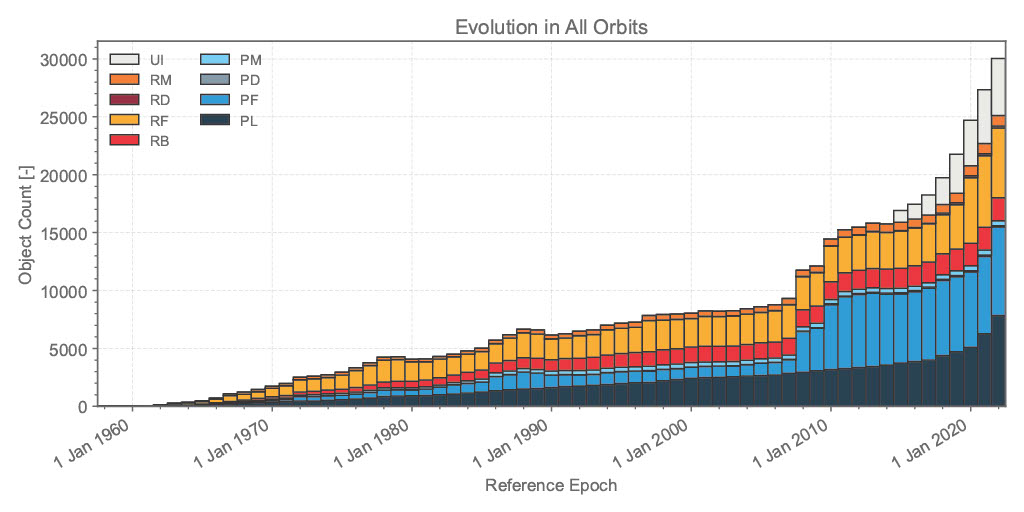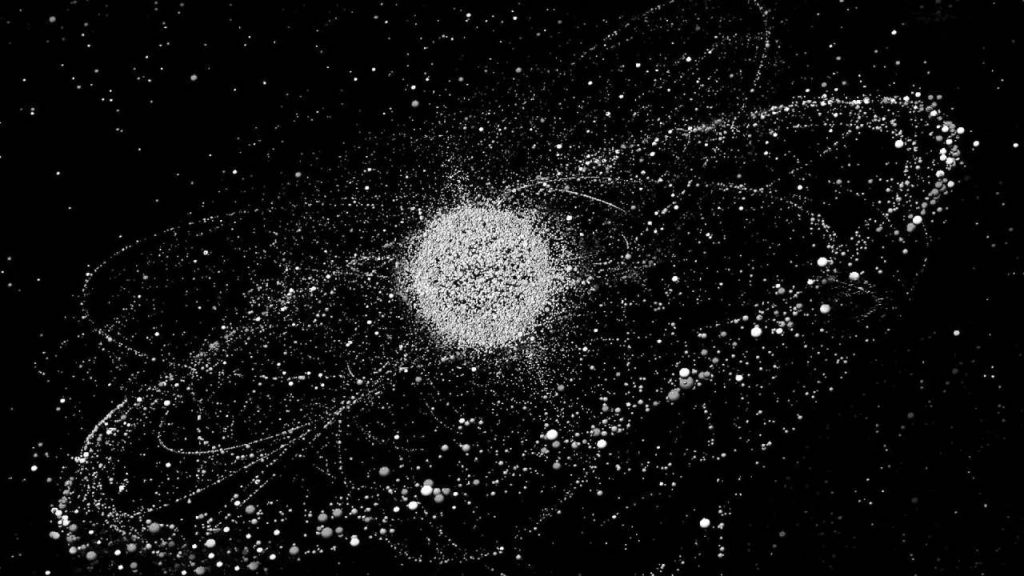The last ESA’s Space Environment Report 2022 confirms how Earth’s atmosphere is surrounded by “deadly fragments of the past”. The European Space Agency speaks about fast-moving pieces from previous satellites and rockets.
The publication of the Space Debris Mitigation Guidelines in 2002, by the Inter-Agency Debris Coordination Committee, defined the first measures to reduce the debris and improve the sustainability of spaceflight. The annual report tracked 30 000 pieces of space debris in orbit, a number continuously rising, but the number of objects larger than 1 cm is probably over un million.

The actual number is probably going to increase dramatically over the next years, as 2021 saw a record number of rockets carrying multiple satellites into orbit, creating difficulties for tracking surveillance. At the LEO (Low Earth Orbit) satellites encounter many other satellites, while at higher altitudes there are many problems with the debris of various dimensions.
ESA suggests a removal rate of 90% to limit the growth rate of space debris. How we can reach this goal? There’s some way to run. The first is the controlled reentry into the atmosphere to burn up the satellites at the end of operative life. The second choice is the Passivation, so the satellites in geosynchronous orbit are designed to move themselves to a disposal orbit some 350 kilometers above the GEO belt, and then remove internally stored energy, while for the biggest satellites, is possible a controlled reentry. The last step is the mission to remove space debris, as the Clearspace-1 promoted by ESA.
MIPRONS is deeply concerned in the project, patented in 48 countries, of the tiniest and most powerful system propulsion for satellites. The innovative thrust chamber is ideal for commercial, scientific, intelligence and security applications, from nano-satellites to the largest. We are developing two solutions, ALEXIUS and the upgrade ALBIREO, an upgrade which will allow, with only one propulsion concept, both low and high-thrust maneuvers (attitude, control and orbit changing), lowering the overall weight and complexity. This one could be one of the solutions to control the orbit environment, helping in the de-orbiting maneuvers or for the collision avoidance.

